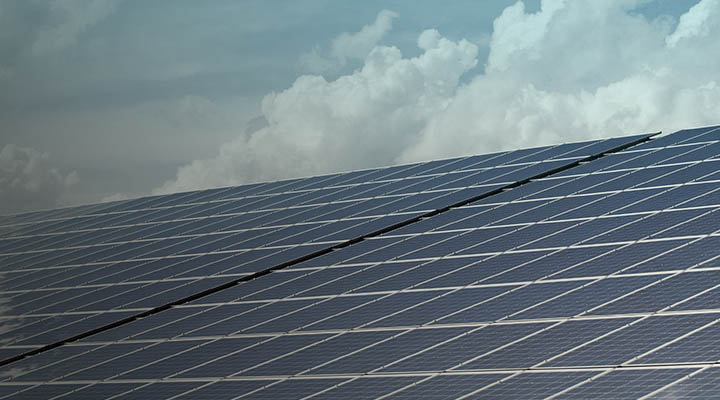The year 2020 has been very eventful for the energy industry. The pandemic has driven us to breaking point in terms of the extraction and usage of fossil fuels. Many countries introduced lockdowns and distancing measures, which reduced commercial and industrial activities, leading to a substantial decrease in global energy demand. This decrease is estimated to be around 6% by the IEA (International Energy Agency). Oil demand is expected to drop 9% and coal 8% for 2020, whilst crude oil reached a record low price of negative $37.63 a barrel, causing even further uncertainty across the energy industry.
The nature of the crisis led to an ‘atypical’ response from the energy industry. Instead of utilising more traditional energy sources, such as oil and coal, energy companies prioritised sources such as solar and wind, often because of low operating costs and priority access to networks. With the fall in energy demand, we saw a rise in the percentage share of renewable sources, such as wind and solar. Countries, such as the USA and India, saw a huge increase in their renewable energy consumption in terms of their total consumption (USA ~40% and India 45%, IEA).
In this article, we’ll explore how energy companies can keep investing in renewable energy by better meeting the changing demand from their customers. We will also discuss how the government can help to support sustainable investments and prosper a positive environmental impact once lockdowns and restrictions are lifted.
The year 2020 has been very eventful for the energy industry. The pandemic has driven us to breaking point in terms of the extraction and usage of fossil fuels. Many countries introduced lockdowns and distancing measures, which reduced commercial and industrial activities, leading to a substantial decrease in global energy demand. This decrease is estimated to be around 6% by the IEA (International Energy Agency). Oil demand is expected to drop 9% and coal 8% for 2020, whilst crude oil reached a record low price of negative $37.63 a barrel, causing even further uncertainty across the energy industry.
The nature of the crisis led to an ‘atypical’ response from the energy industry. Instead of utilising more traditional energy sources, such as oil and coal, energy companies prioritised sources such as solar and wind, often because of low operating costs and priority access to networks. With the fall in energy demand, we saw a rise in the percentage share of renewable sources, such as wind and solar. Countries, such as the USA and India, saw a huge increase in their renewable energy consumption in terms of their total consumption (USA ~40% and India 45%, IEA).
In this article, we’ll explore how energy companies can keep investing in renewable energy by better meeting the changing demand from their customers. We will also discuss how the government can help to support sustainable investments and prosper a positive environmental impact once lockdowns and restrictions are lifted.
The Impact Of Government Incentives
In my opinion, the slowdown of the global economy and shift in energy demand can serve as a starting point for a more sustainable economic restart. Now countries are starting to reopen, I believe consumers will start craving a return to their old habits and behaviours; therefore the role of governments will be extremely important to make sure the renewable energy sector can thrive in this situation.
Governments in countries such as Germany and Italy are currently agreeing on relief packages for industries, which have been heavily affected by Covid-19. To make sure the economy can restart on a greener foot, governments should look to attach conditions to this economic support such as a target on carbon reductions and offsetting, as well as incentives for companies looking to de-carbonise and prioritise renewables. For example, as part of the Austrian Government’s aid to save Austrian Airlines €450m, the Government announced a series of climate conditions such as reducing total emissions by 30% by 2030 and ending flights where a train connection exists. In addition, as part of Germany’s €130 billion stimulus package, the Government lowered the renewable energy surcharge for 2021 and 2022, which is paid by consumers to support the installation of renewable energy plants.
But more can be done to encourage businesses to further reduce their carbon footprint and support consumers in taking the greener choice when selecting energy services and products. By stimulating strong investments in the right areas, businesses and households alike could prioritise and invest in greener energy sources. This shift in consumers and business attitude would consequently fast forward the fight against pollutants and climate change.
Shifting Consumer Preferences
Consumer behaviour was heavily influenced by the pandemic and subsequently by the economic crisis, derived by lockdowns and the disruption of small and large businesses alike. Personal investments in renewable energy, such as the installation of solar panels at home, have been paused or postponed because of social distancing or economic uncertainty. Consumers are generally more concerned about the future, which I believe has led them to them truly caring about how they spend every penny of their money. When making a purchase, consumers have been asking themselves questions such as: ‘Is this product a sound and sustainable investment? Is it worth the money?’.
Time spent apart from the routine we were habitually used to has fundamentally shifted many of our priorities and has forced us to buy and invest in what is essential for our lives. Consumers are now looking for durable and ethical products that don’t impact the planet or indeed their wallet. These new preferences are directly correlated to the energy sources they use and the companies they interact with.
To win over new consumers with their evolved preferences, the energy industry, and specifically companies which have been investing heavily in providing more sustainable energy sources, should put their customers first and support them while they make their investment choices. Companies no doubt understand the difficulty of these times and should be looking to incentivise and offer bundles or discounts to customers looking to become more sustainable by installing solar panels or using more sustainable energy sources. Companies that will be able to connect with their customers through their core brand values will also be able to establish themselves as leaders in their recovery in the post-Covid energy market.
Cost Saving Technology
The pandemic has brought with it new priorities for both consumers and companies, and many businesses have had to cut their innovation budget in favour of stabilising their operations and implementing cost-cutting initiatives. But it is also recognised that companies who are prepared to invest in their innovation and in new technologies are more likely to emerge from this crisis as winners.
For example, renewable energy production, such as solar and wind, is heavily dependent on an accurate weather forecast. A more accurate prediction of weather can support a more efficient maintenance schedule, which in turn drives efficiencies and lower costs. Therefore, a great example of innovation is solar power forecasting. This could be a powerful tool for companies looking to maximise production and lower maintenance costs. Companies could, therefore, schedule maintenance sessions on days where solar production is low. As well as understanding the projected increase in energy production, which would allow them to plan the amount of energy that can be sold on a given day, and at what price, based on forecasted production.
Technologies such as machine learning can be used as a powerful tool to support energy companies becoming more efficient during such an uncertain time. It would be great to see energy companies big and small, taking the initiative and driving forward the industry’s innovation agenda.
Published
April 29, 2024Reading time
4 minutesRelated posts





